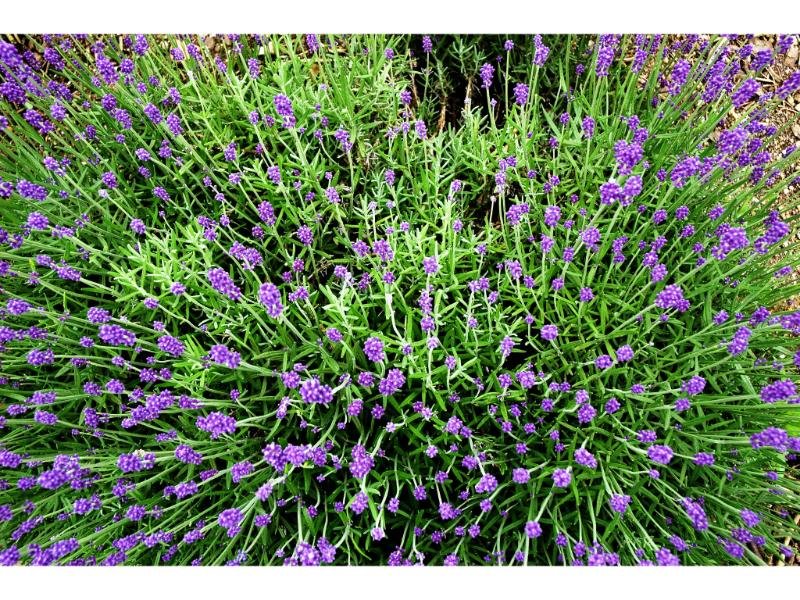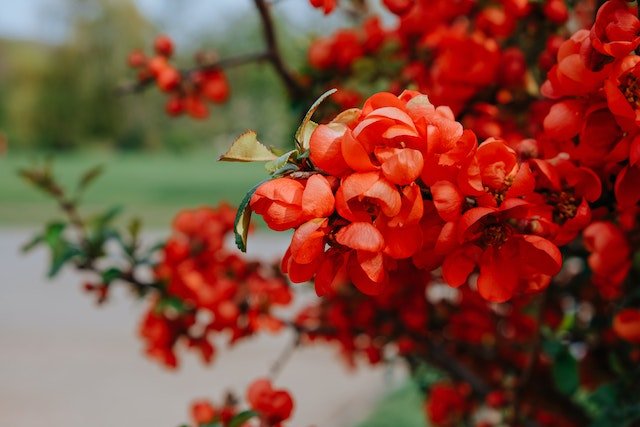key takeaways:
- Does lavender spread? Yes, lavender is capable of spreading, especially English lavender varieties.
- How big does lavender get? Most lavender plants grow 12-18 inches tall and wide in ideal conditions. However, some varieties can reach 2-3 feet tall and wide when mature.
- How fast does lavender spread? Lavender’s growth rate is considered moderate, spreading out an average of 6-12 inches per year once established. Quick-growing varieties may spread up to 2 feet laterally in a single season.
Table of Contents
An Overview of Lavender’s Growth Habits
Lavender (Lavandula) is an extremely popular perennial herb grown for its beautiful flowers and fragrant foliage. This traditional cottage garden plant flourishes in sunny, hot climates with well-drained soil.
There are over 40 species of lavender, with hundreds of hybrids and cultivars to choose from. Growth habits can vary greatly depending on the lavender variety.
When evaluating a lavender’s potential to spread, it’s important to understand key factors like:
- Type of Lavender – English lavenders are more aggressive growers than other types
- Mature Size – Larger varieties take up more space
- Growth Rate – Fast-growing kinds spread quicker
- Growing Conditions – Ideal conditions encourage faster spreading
Below we’ll explore precisely how far and wide different lavender varieties can grow to determine just how much they spread under optimal circumstances.
Does Lavender Spread?

Yes, lavender readily spreads in ideal growing conditions. However, the exact rate and distance plants colonize territory depends on the lavender variety.
- English lavender (L. angustifolia) is the most prolific type, rapidly expanding its reach.
- Spanish lavender (L. stoechas) spreads slowly and mainly through self-seeding.
- Hybrid lavenders can be variable – some spread vigorously like English types, while others expand slowly.
Free-growing, unpruned lavender will naturally increase its footprint each year. But even frequently sheared plants still enlarge over time.
Let’s look more closely at how big lavender grows and its potential spread rate.
How Big Does Lavender Get?
- Most lavender varieties grow 12-18 inches tall and wide when they reach maturity.
- Compact dwarf English lavender may only reach 8 inches tall and wide.
- Large English lavender can attain heights and widths of 2-3 feet.
- In optimal growing conditions, lavender growth is at the upper end of size ranges.
Theses dimensions refer to individual lavender plants. But because lavender grows in bushy clusters, the total footprint of plant groupings can be much larger – up to several feet across.
Also keep height in mind when placing lavender. Tall-growing kinds can visually overwhelm shorter landscape plants if placed too close together.
How Fast Does Lavender Spread?
The speed with which lavender extends its reach largely depends on the variety.
- English lavender tends to be the fastest spreading type, colonizing at an average rate of 6-12 inches per year once established.
- Rapidly growing varieties like phenomenal or Goodwin Creek gray lavender can spread up to 2 lateral feet per season in ideal conditions.
- Spanish lavender is at the opposite end of the spectrum, spreading lethargically by 2-4 inches annually.
- Hybrid lavenders have mixed performance – ranging from moderately fast to quite slow expansion.
Apart from variety, other factors impacting spread rate include soil, climate, available space, and pruning regimen.
Very frequent shearing (more than once a year) will slow a lavender plant’s outward expansion. But completely halting determined growers like English lavender is difficult even with rigorous cutting back.
Containing Lavender’s Spread
Lavender’s ability to spread presents both advantages and challenges in the garden.
On the positive side:
- The natural expansion helps lavender form impressive drifts and hedges.
- More plants mean an increase in visual appeal and fragrant floral displays!
On the negative side:
- Rapid spreaders can overwhelm nearby plants and your garden design.
- Containing plants within bounds requires vigilance and persistent pruning.
Fortunately, there are several effective options to curb unwanted lavender growth:
- Select slow-growing varieties – Avoid fast-spreading English lavender unless you have ample room.
- Use barriers – Bury hardware cloth, metal strips, or plastic vertically to block spreading roots.
- Prune often – Shearing off new growth several times per year helps restrict expansion.
- Transplant seedlings – Thin and relocate self-sown seedlings to prevent colonies from forming.
Achieving Balance With Lavender’s Growth
Lavender’s moderately fast growth and lateral spread potential make it a candidate for increased garden space over time. But with smart variety selection and proactive containment methods, lavender can be grown successfully for many years without turning rampant.
The keys are providing enough initial planting space, frequent monitoring for new growth, and responding with timely pruning, division, or barrier installation as needed to keep lavender growth in check.
When lavender is allowed to expand freely, it will generously spread its flowers and fragrance – bringing abundant beauty to gardens and landscapes. So while lavender spreads eagerly, a little garden management goes a long way in achieving an easily controlled balance.

Gardening is my passion and growing plants indoors has always been a stress relief for me. Grow a banana tree in my apartment once (although failed to produce bananas).






